Abstract
WR 30090 at a dose of 230 mg every 8 hr for 6 days has proven to be a safe, well-tolerated compound with photosensitivity proving to be a minor consideration. WR 30090 was found to be an effective medication for the treatment of acute malaria caused by several strains of Plasmodium falciparum. At the dose of 230 mg every 8 hr for 6 days, all of six men infected with a chloroquine-susceptible strain (Uganda I) were cured, all of 13 subjects infected with moderately chloroquine-resistant strains (Malayan Camp, Malayan Taylor, and Philippine Per) were cured, and 19 of 23 subjects infected with strains highly resistant to chloroquine (Vietnam Smith and Vietnam Crocker) were cured. All of five subjects infected with the chloroquine-resistant Vietnam Marks strain were cured with only 3 days of therapy. Blood-induced P. vivax (Chesson strain) infection showed a mixed response. Six out of seven volunteers were cured when treated for 3 days with WR 30090. The one recrudescence responded to a repeated course of therapy for 3 days. However, recrudescence occurred in one volunteer treated for 6 days. Treatment with WR 30090 failed to cure sporozoite-induced P. vivax (Chesson strain) infection in any of four subjects. In all subjects treated, there was good suppression of parasitemia and relief of symptoms. The susceptibility of the strains of malaria to WR 30090 to some degree parallels their susceptibility to chloroquine.
Full text
PDF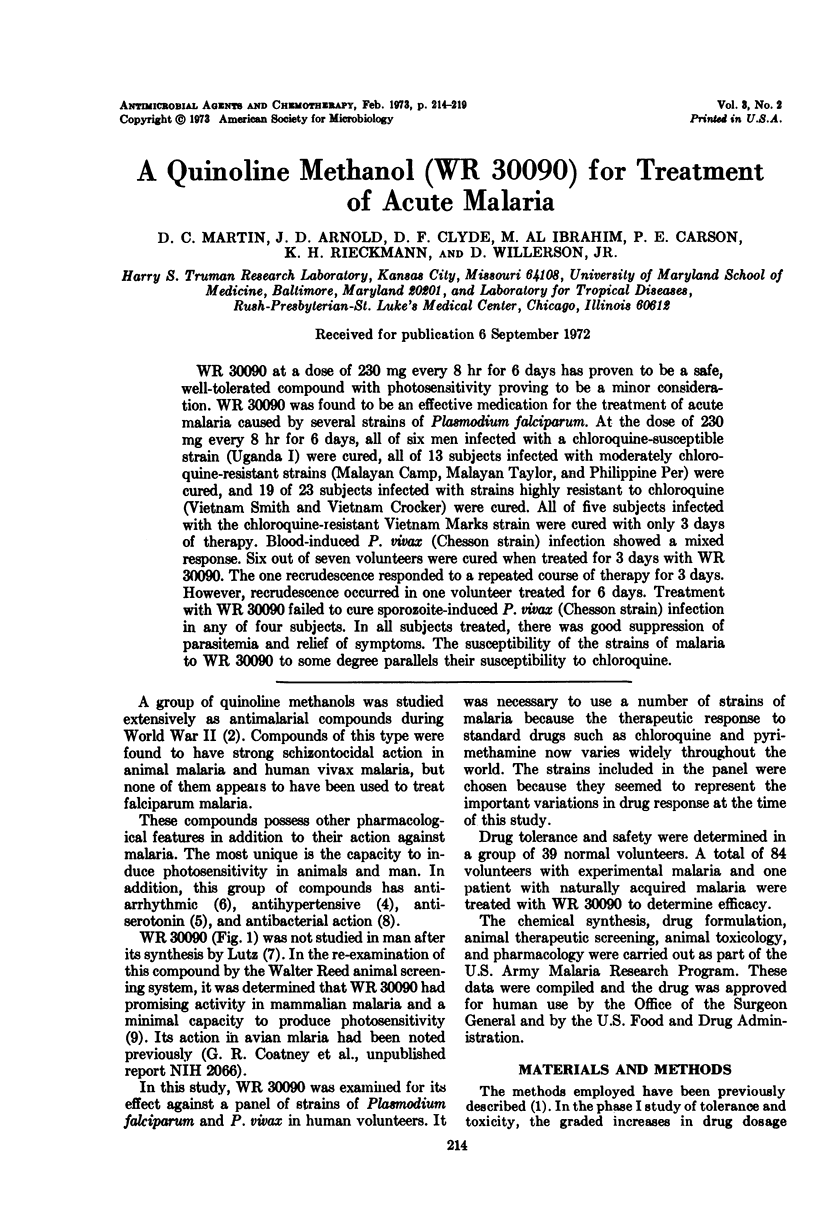
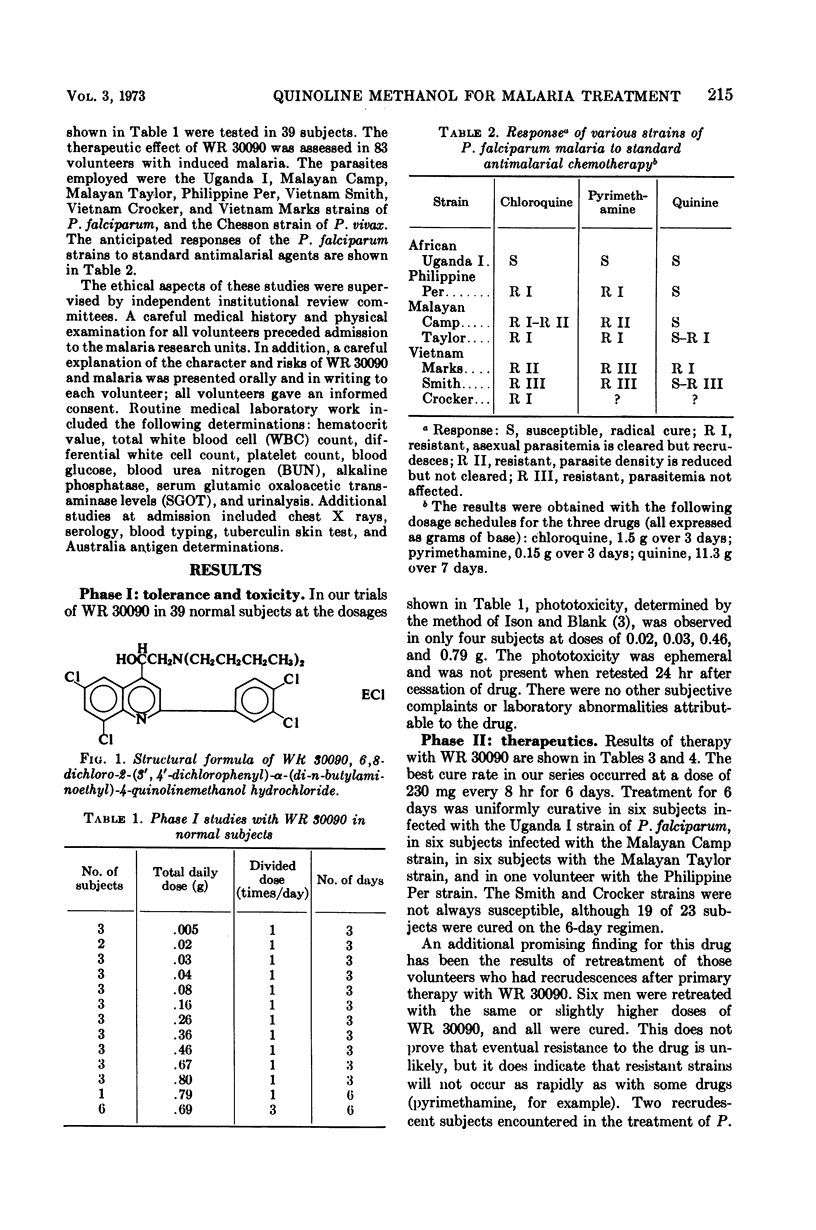
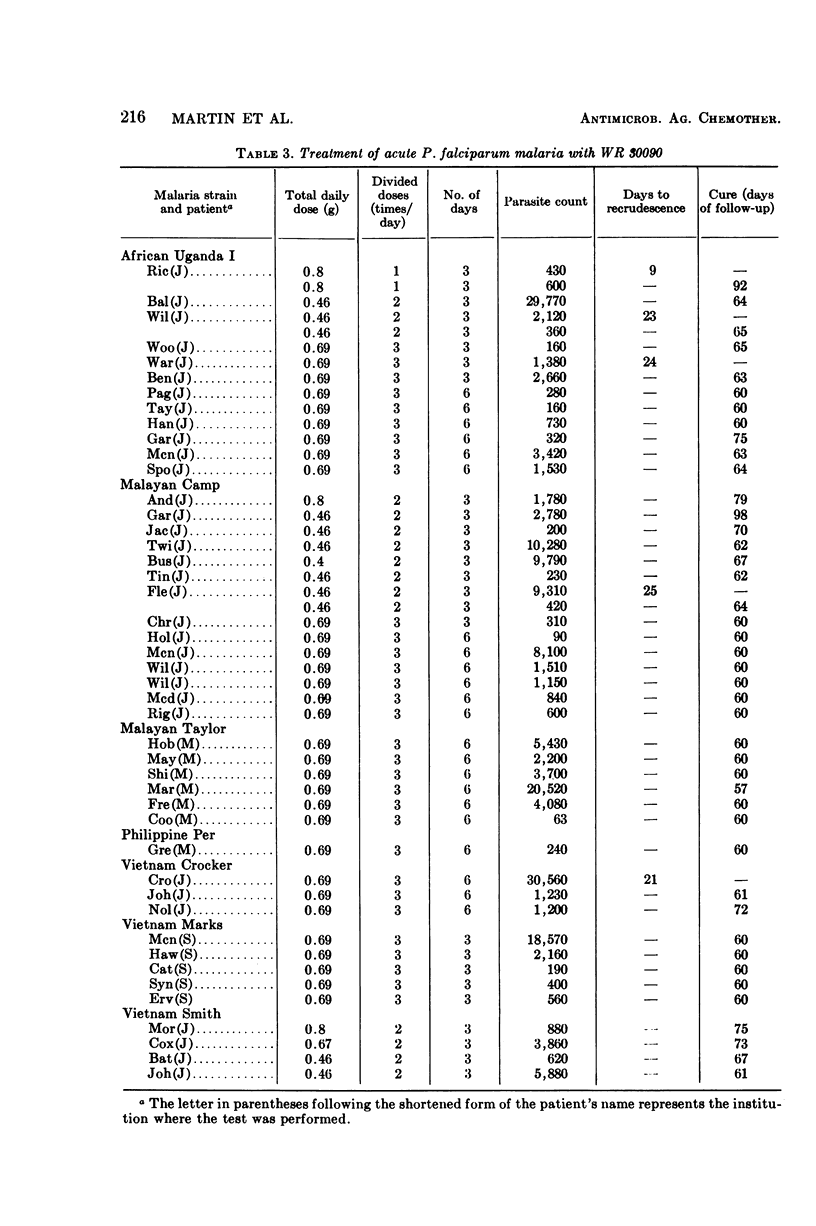
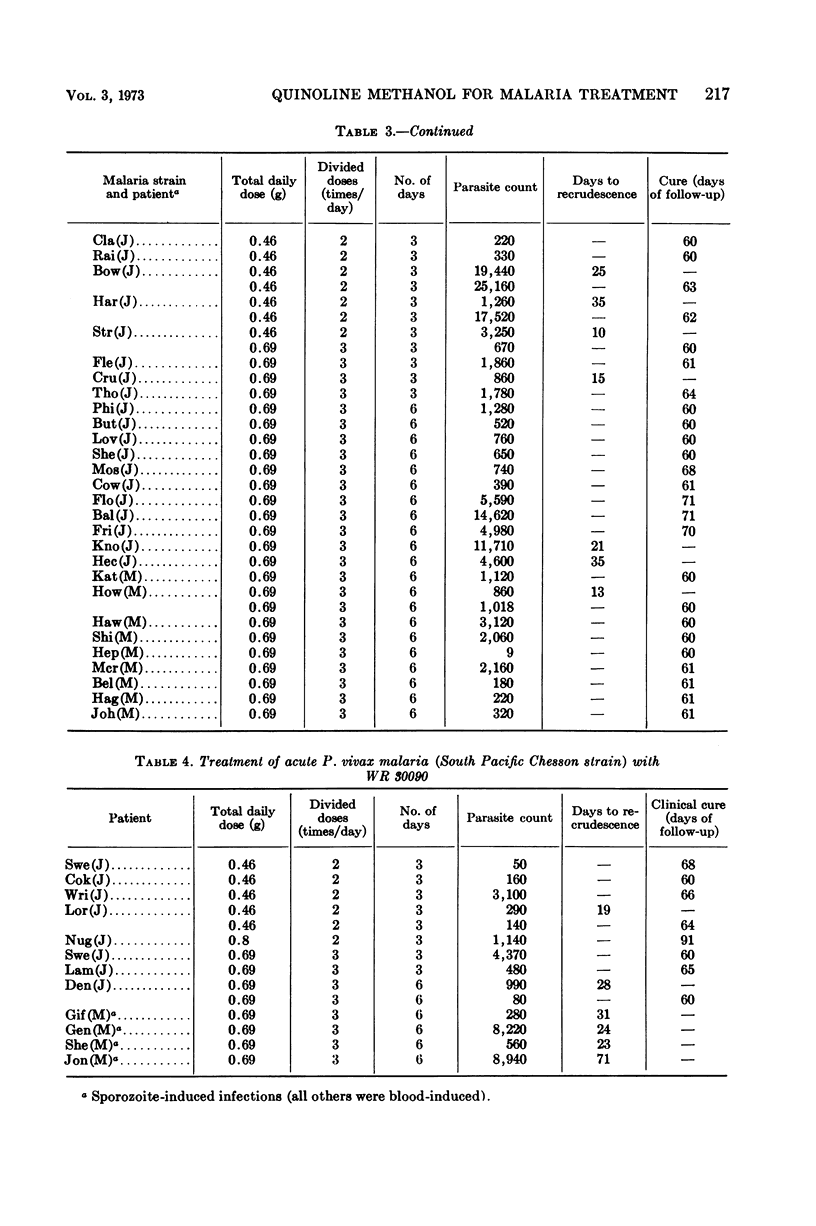
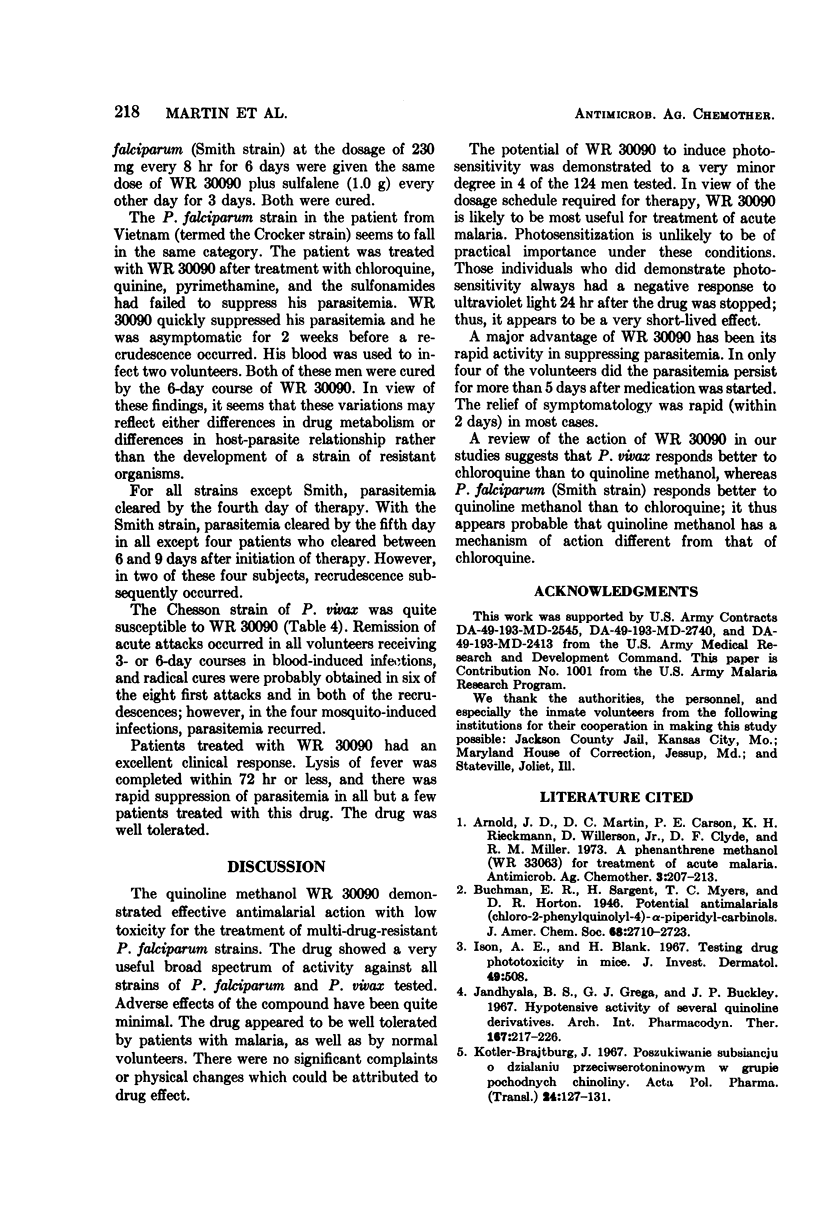
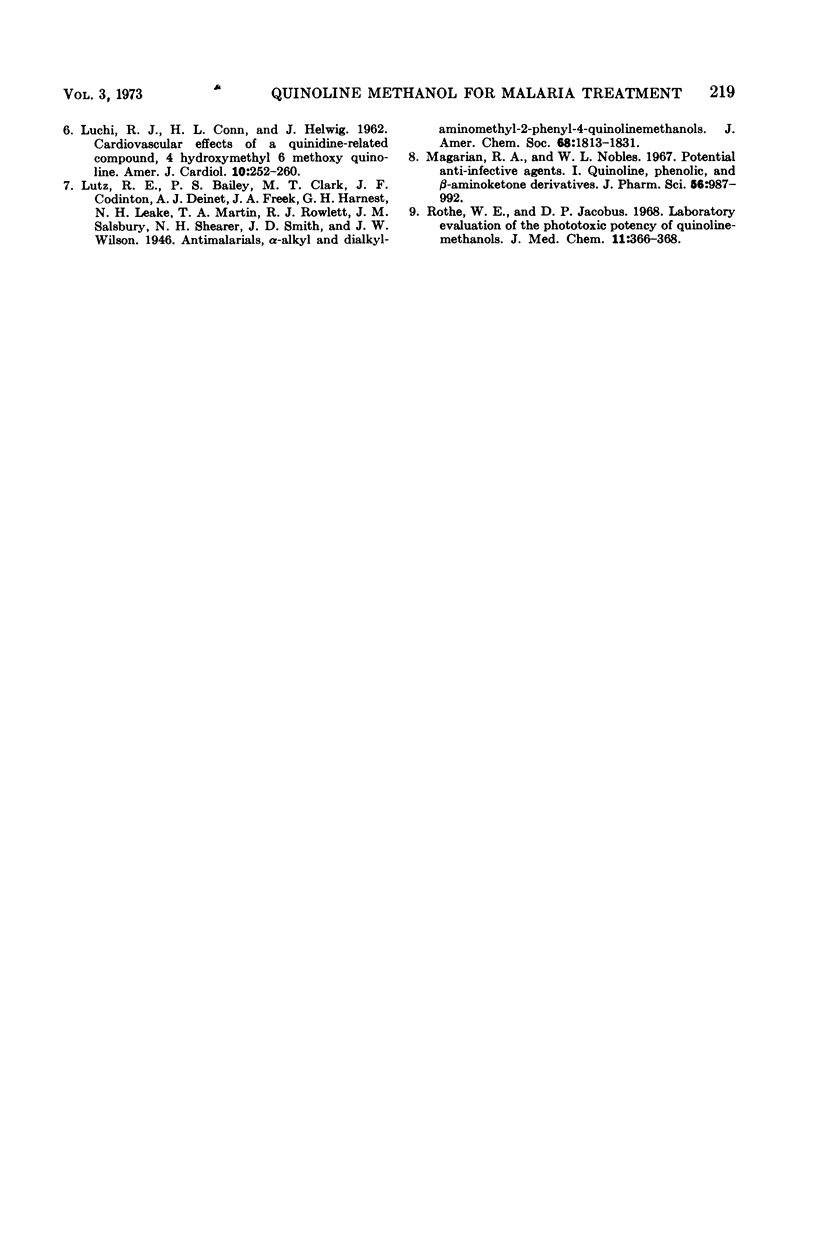
Selected References
These references are in PubMed. This may not be the complete list of references from this article.
- Arnold J. D., Martin D. C., Carson P. E., Rieckmann K. H., Willerson D., Jr, Clyde D. F., Miller R. M. A phenanthrene methanol (WR 33063) for treatment of acute malaria. Antimicrob Agents Chemother. 1973 Feb;3(2):207–213. doi: 10.1128/aac.3.2.207. [DOI] [PMC free article] [PubMed] [Google Scholar]
- Jandhyala B. S., Grega G. J., Buckley J. P. Hypotensive activity of several quinoline derivatives. Arch Int Pharmacodyn Ther. 1967 May;167(1):217–226. [PubMed] [Google Scholar]
- Kotler-Brajtburg J. Poszukiwanie substancji o działaniu przeciwserotoninowym W GRUPIE POCHODNYCH CHINOLINY. II. N,N-dwumetyloaminoacetyloaminochinoliny i ich sole czwartorzedowe. Acta Pol Pharm. 1967;24(2):127–131. [PubMed] [Google Scholar]
- Magarian R. A., Nobles W. L. Potential anti-infective agents. I. Quinoline, phenolic, and beta-aminoketone derivatives. J Pharm Sci. 1967 Aug;56(8):987–992. doi: 10.1002/jps.2600560814. [DOI] [PubMed] [Google Scholar]
- Rothe W. E., Jacobus D. P. Laboratory evaluation of the phototoxic potency of quinolinemethanols. J Med Chem. 1968 Mar;11(2):366–368. doi: 10.1021/jm00308a041. [DOI] [PubMed] [Google Scholar]


